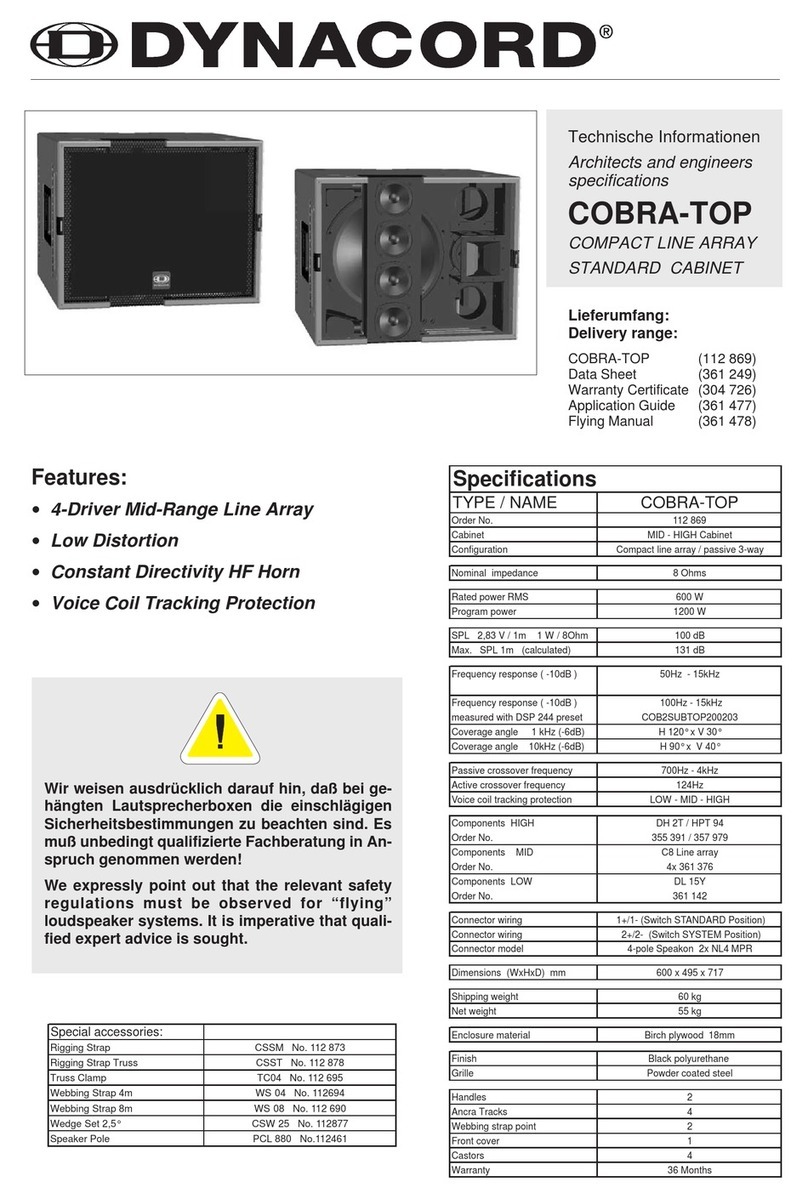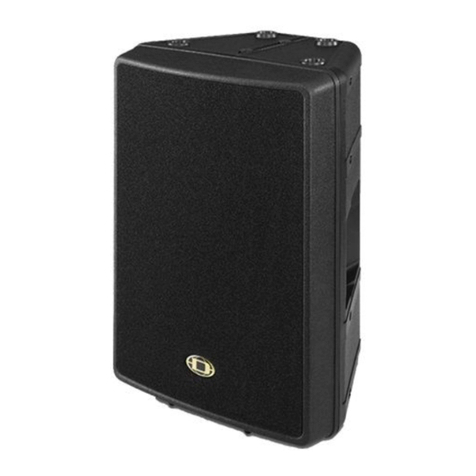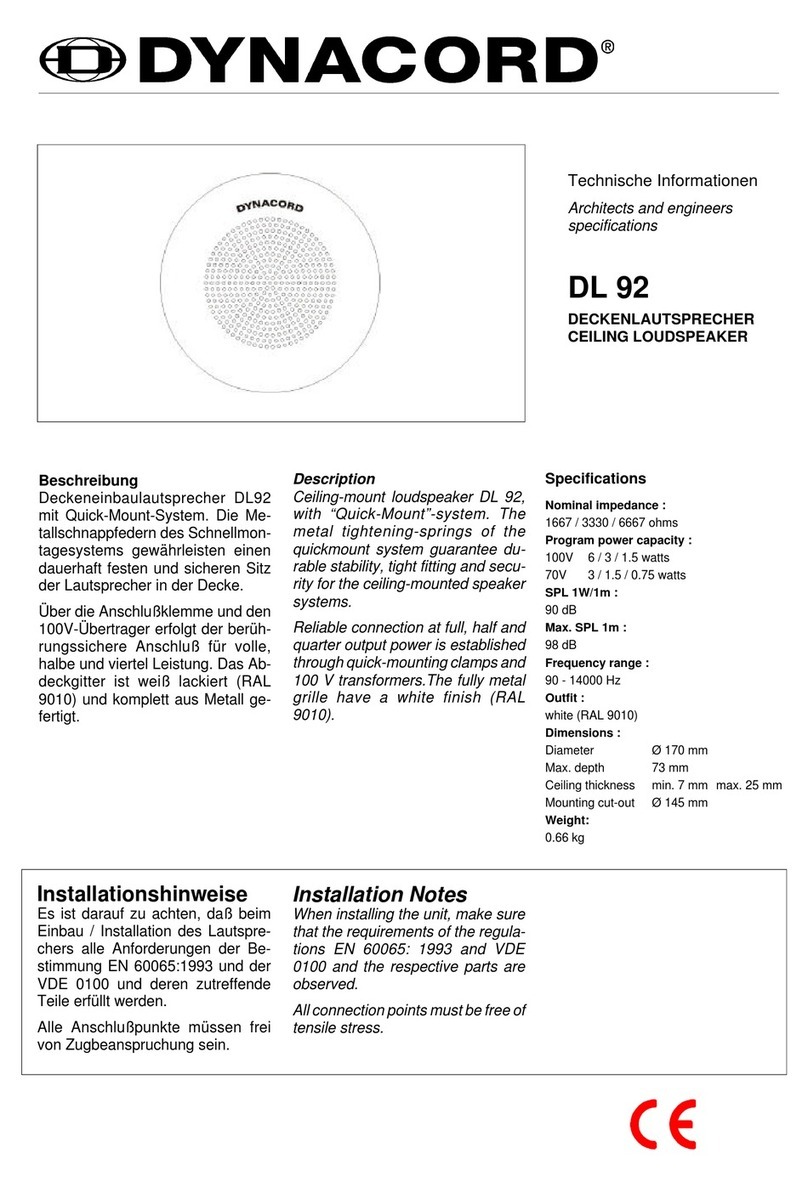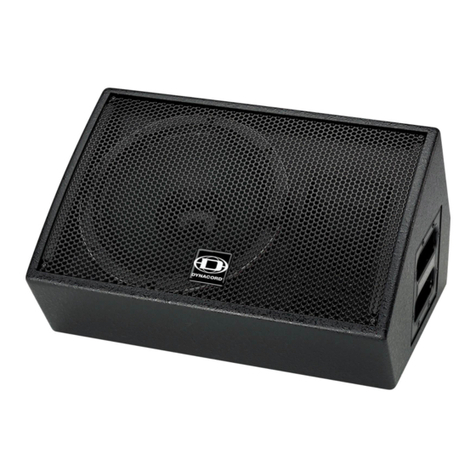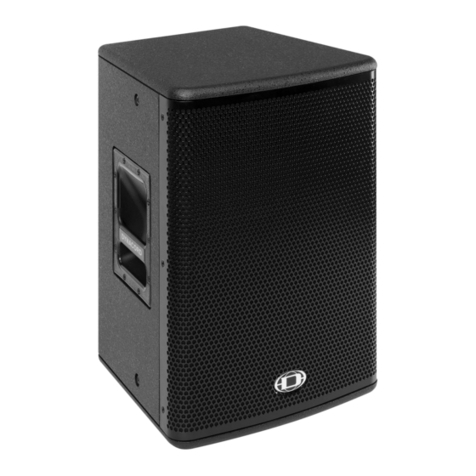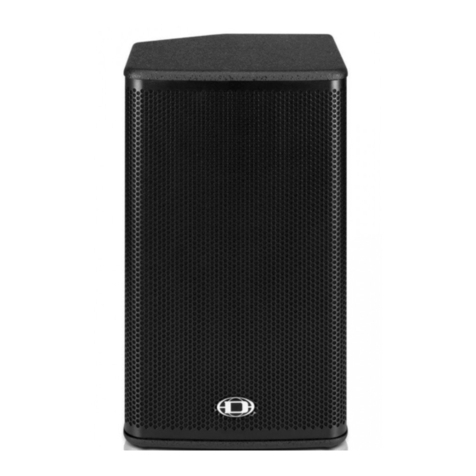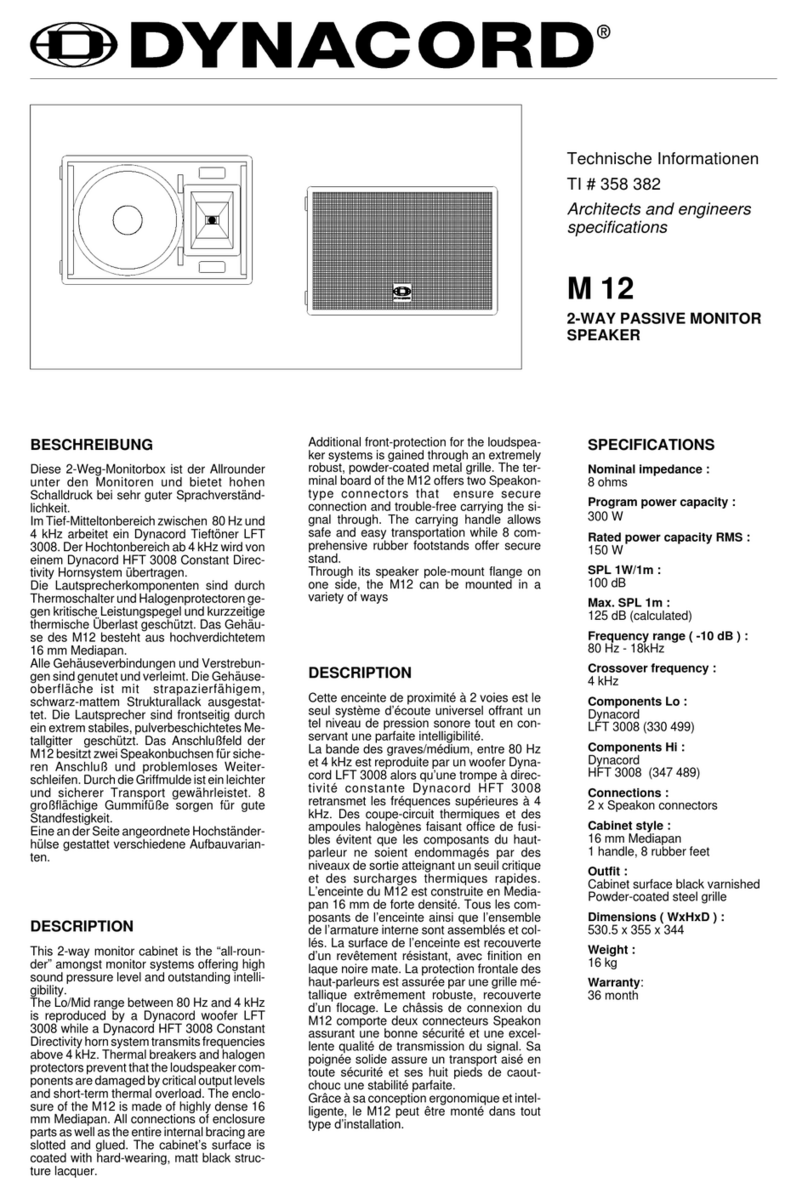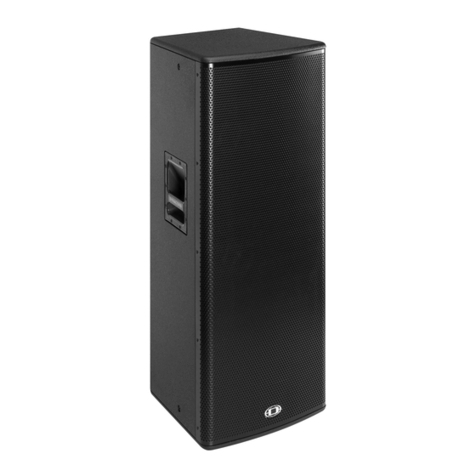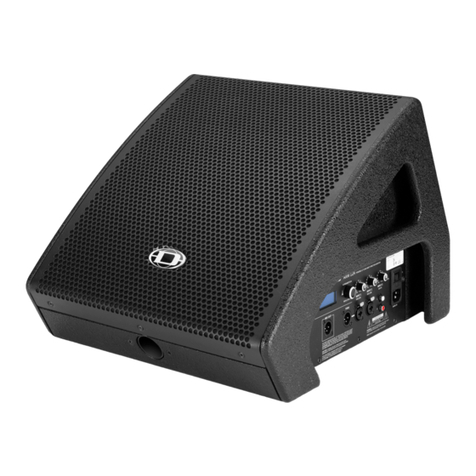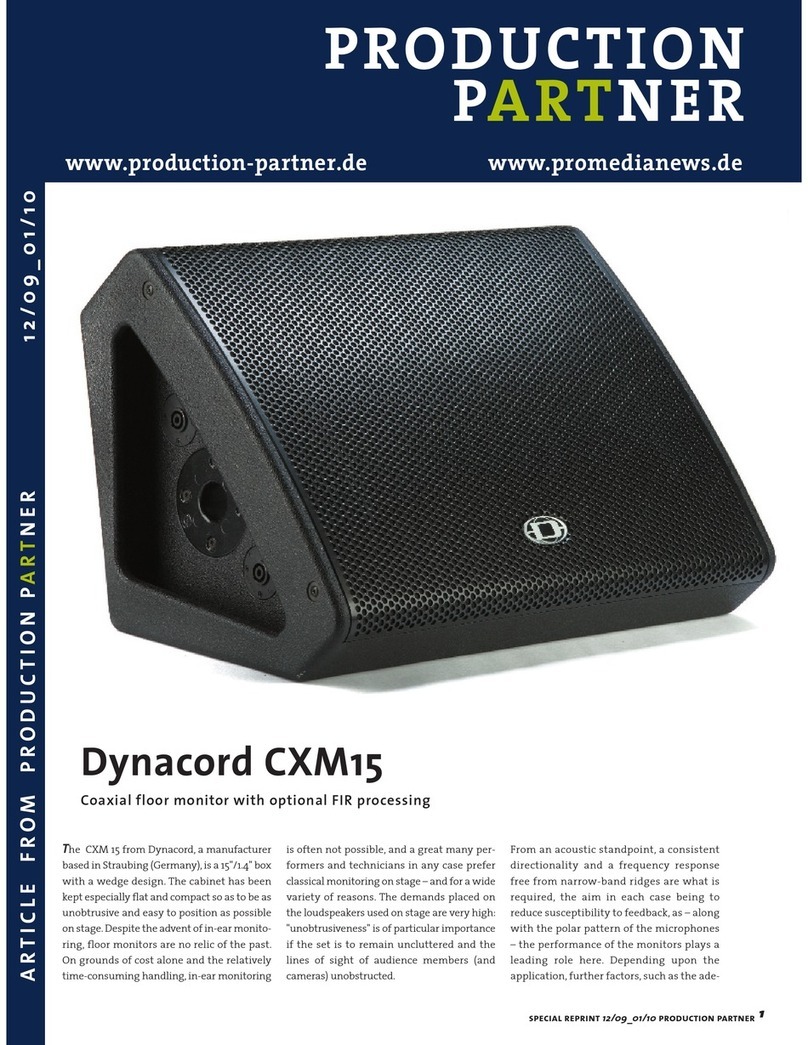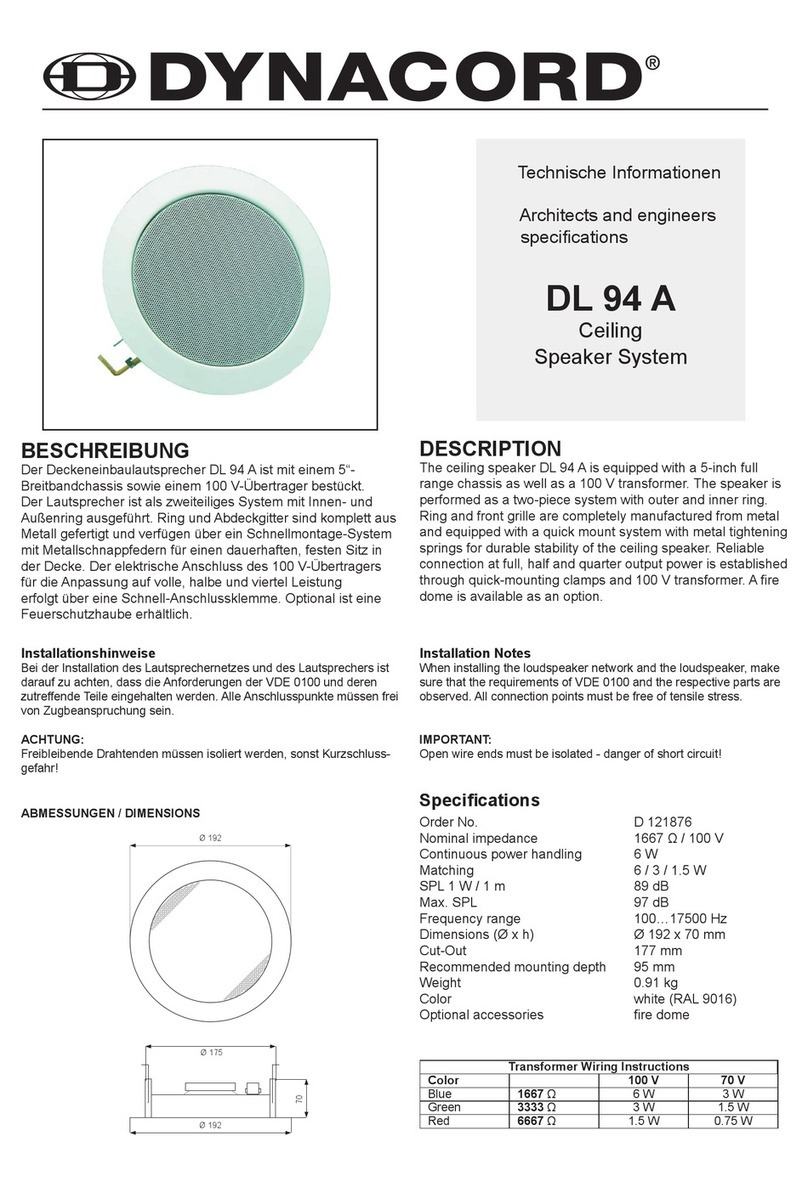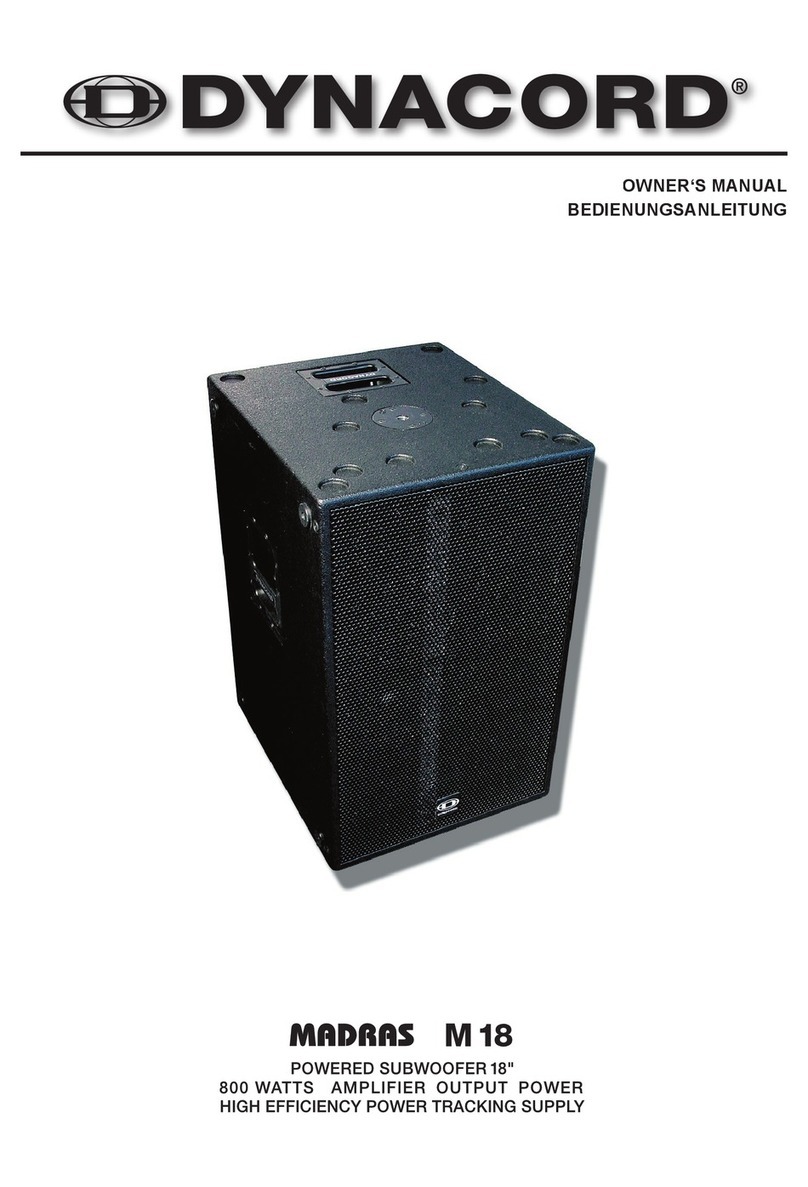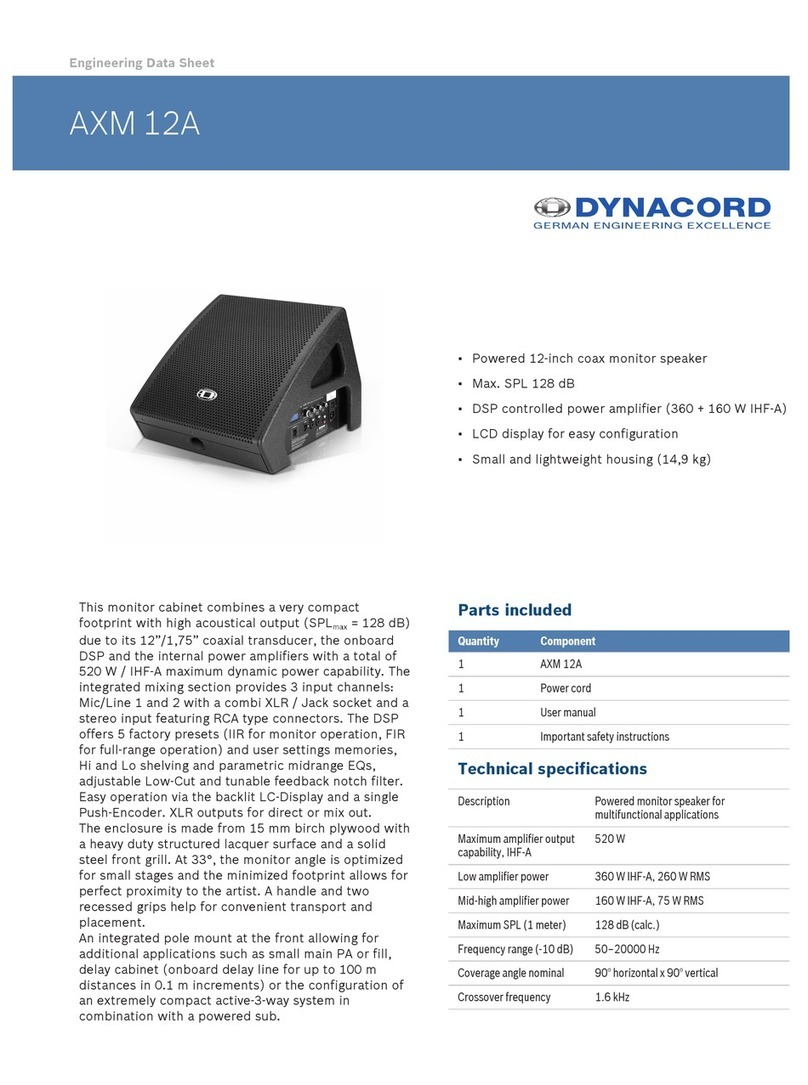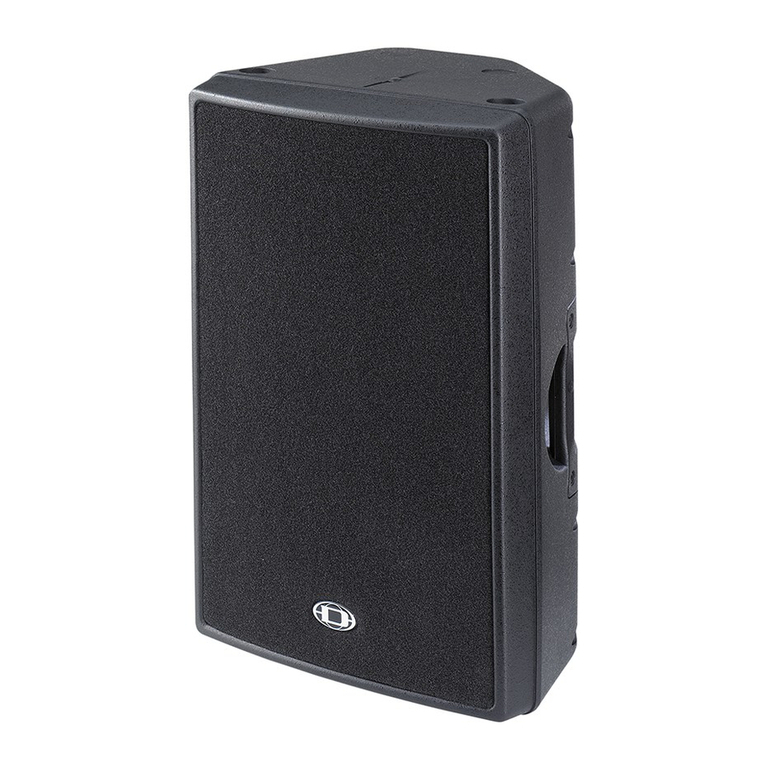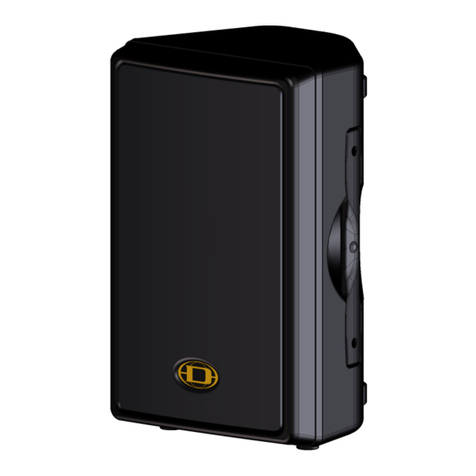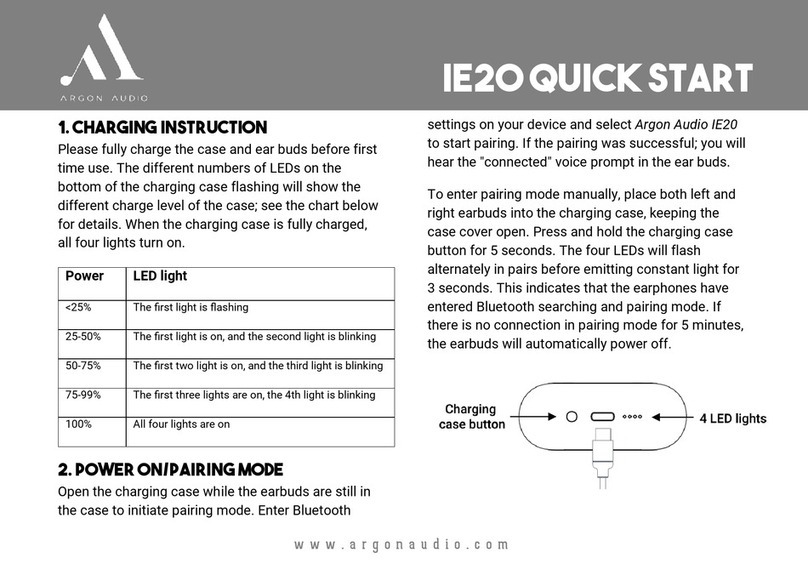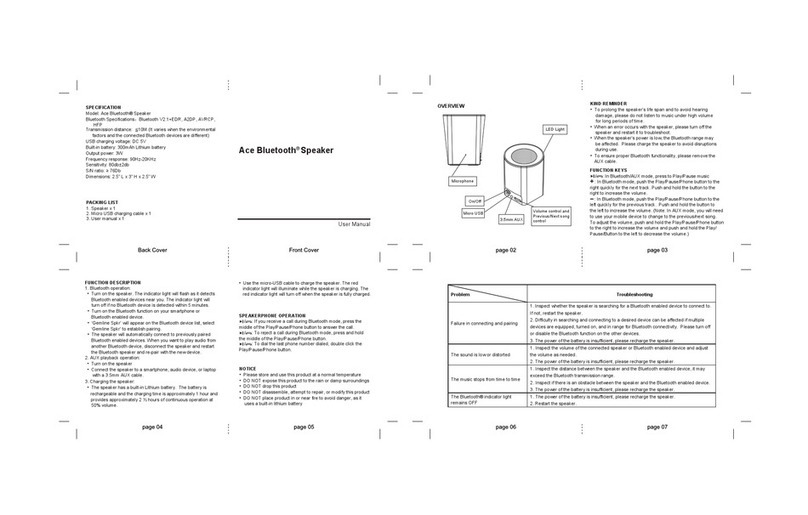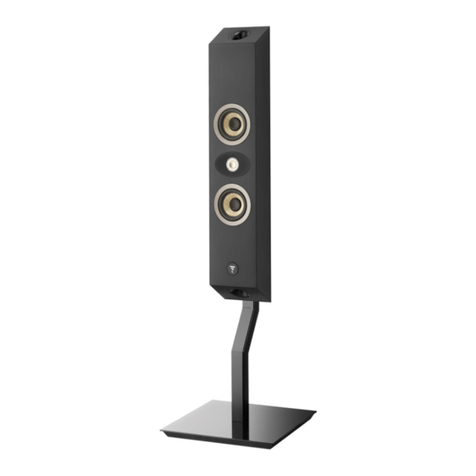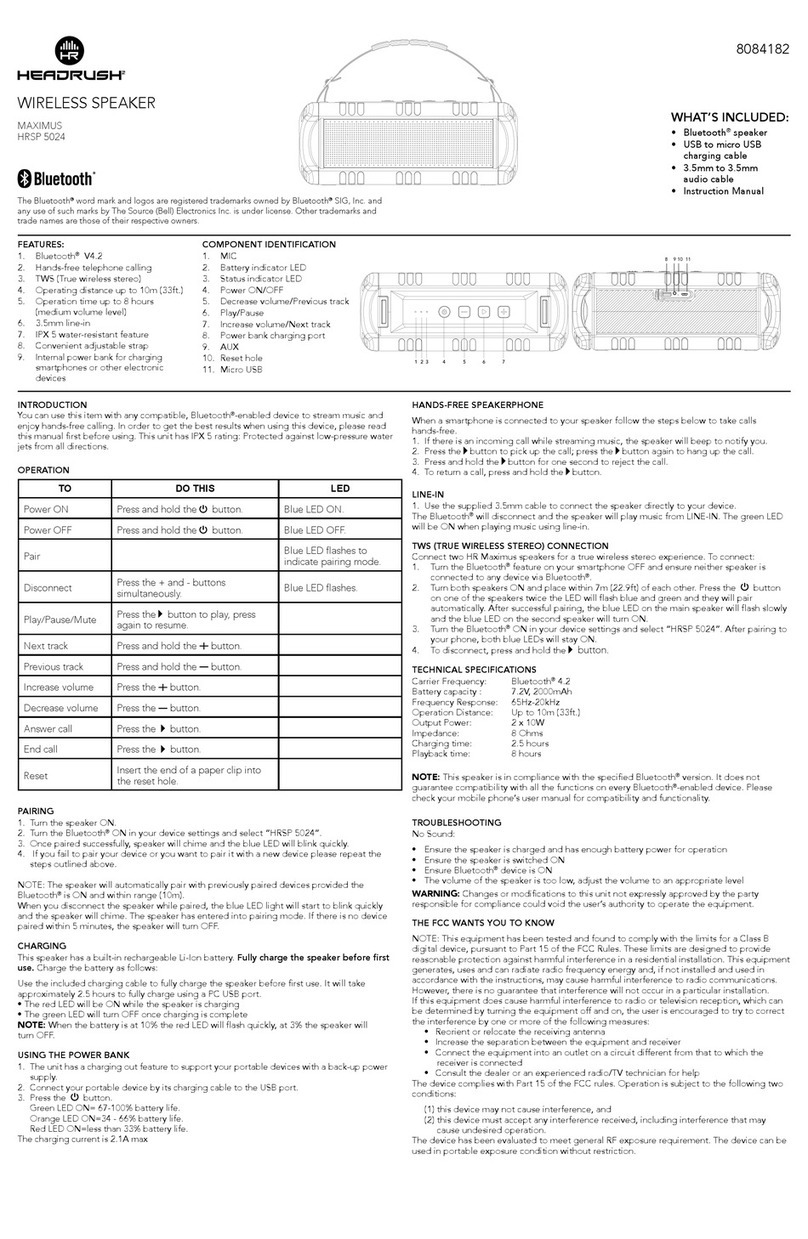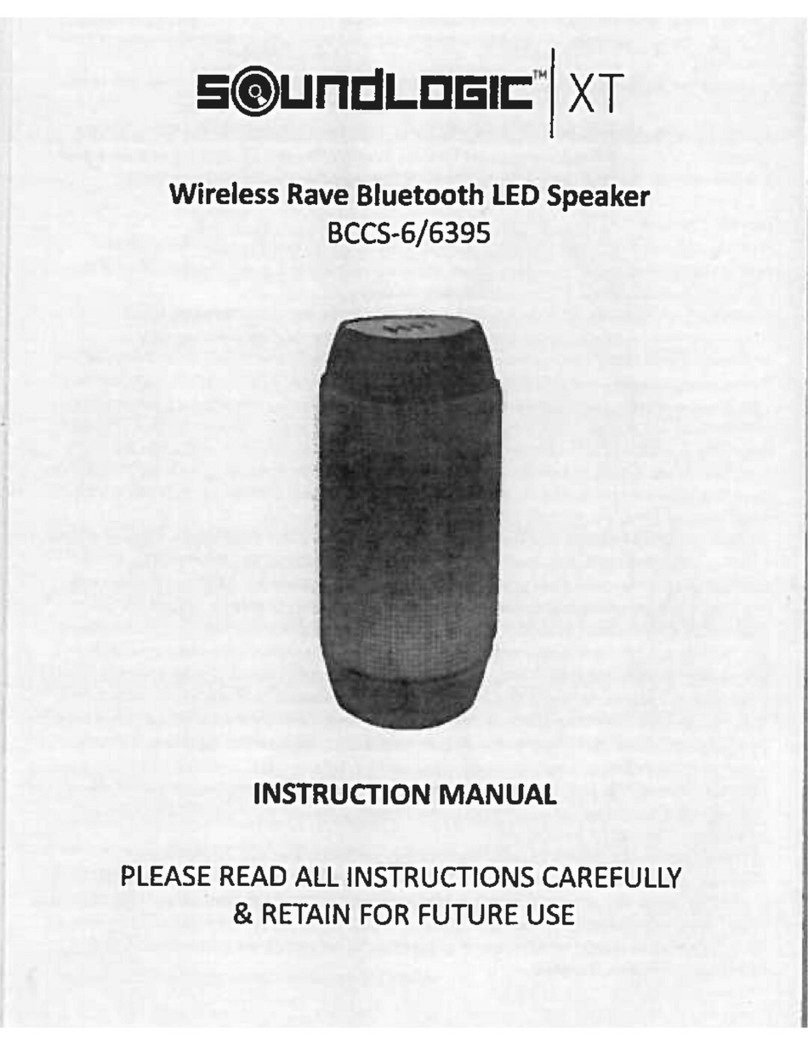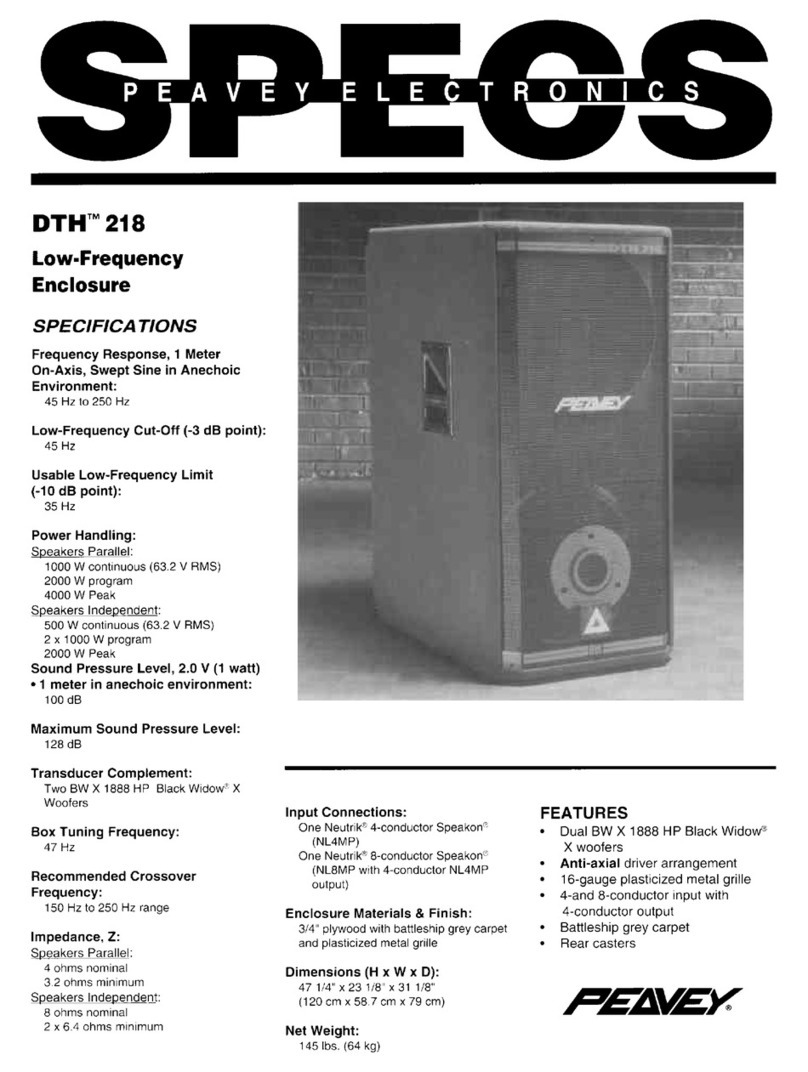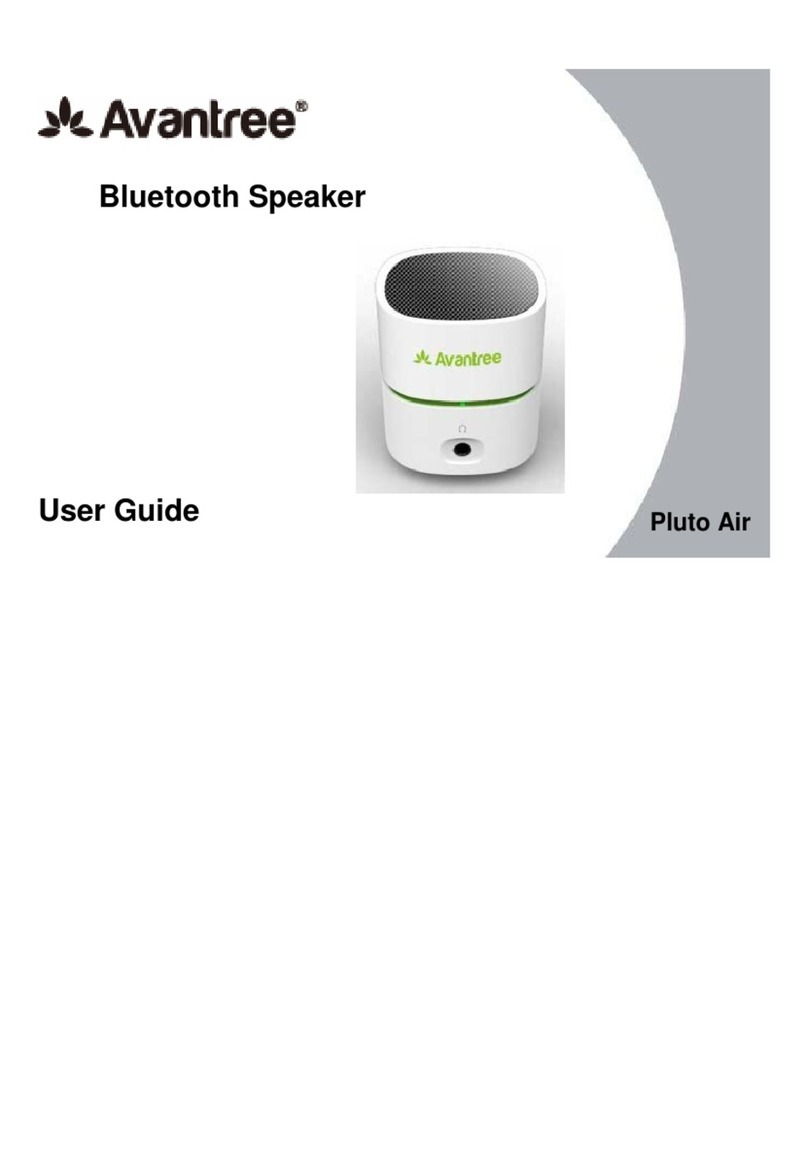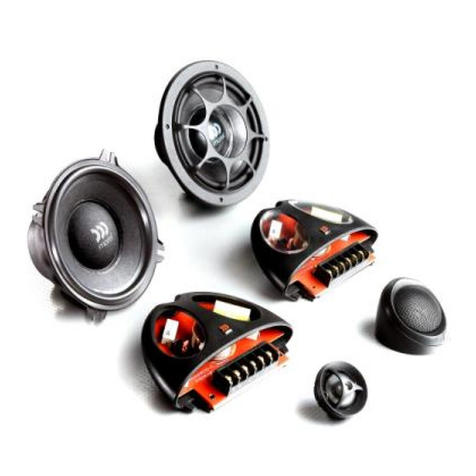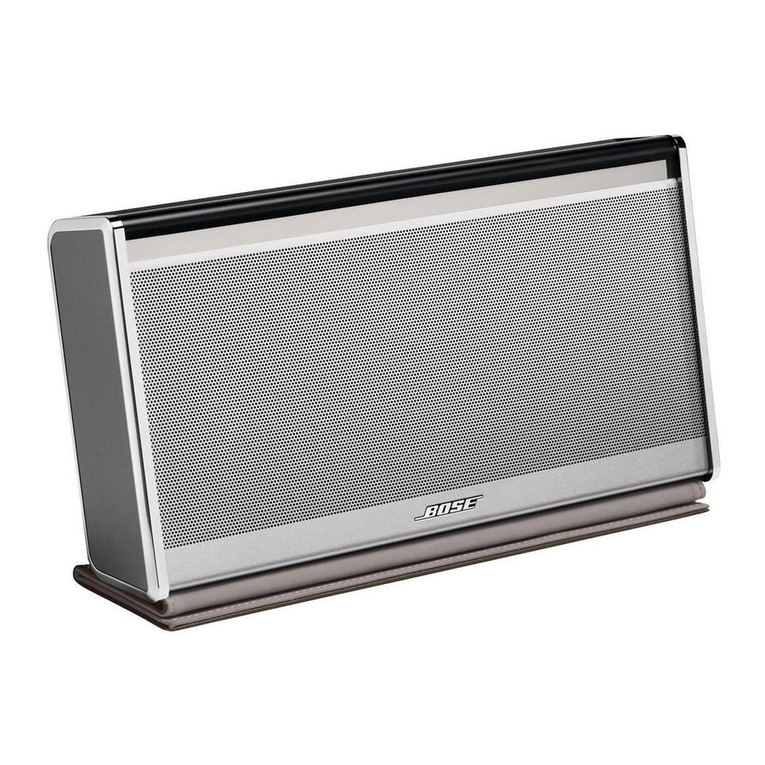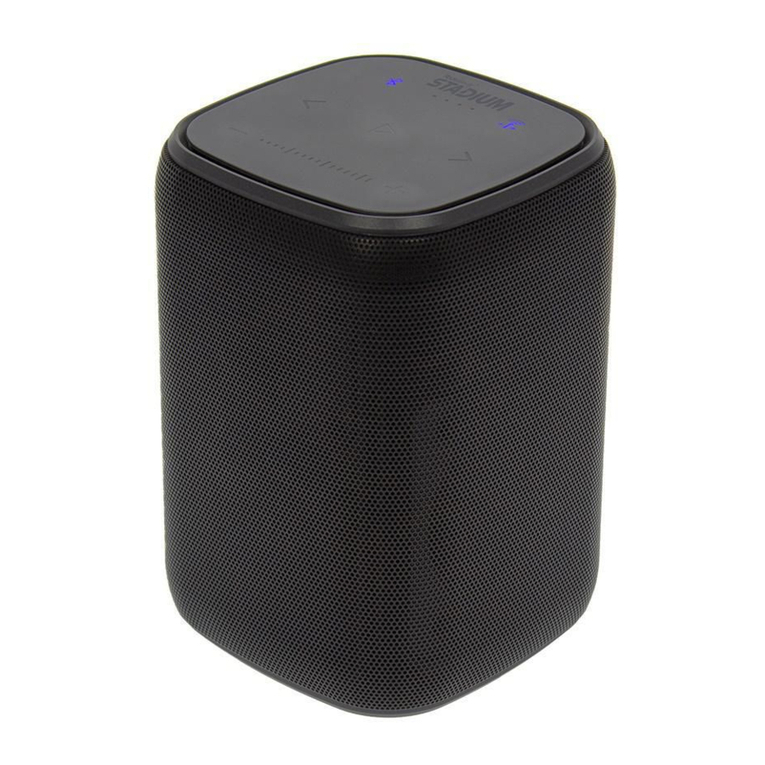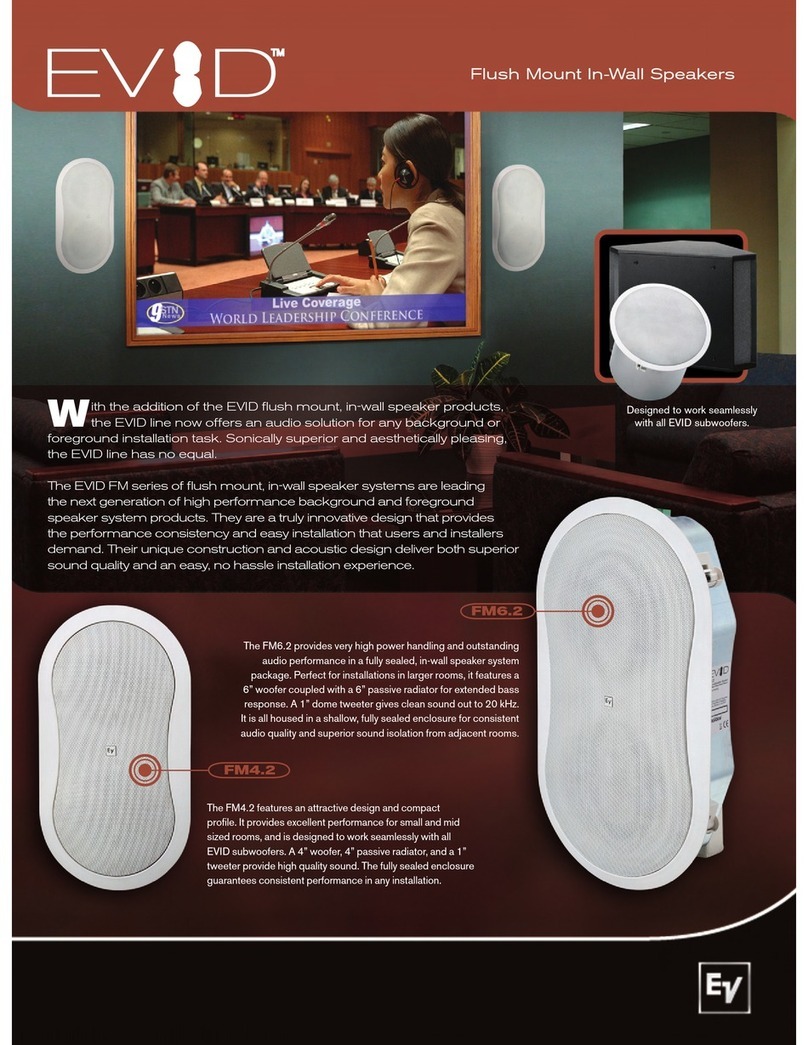DYNACORD
6
1 LIMIT INDICATOR (LIMIT)
Brief blinking of the LIMIT LED indicates that the
power amplifier of the D 11A is operated at its limits.
Short-term blinking is uncritical, because the inte-
grated limiter compensates minor distortion. Constant
lighting of the LED indicates that the sound is negatively af-
fected. Reducing the output volume is strongly recom-
mended.
2 MASTER LEVEL CONTROL (VOLUME)
Level control for adjusting the power
amp’s overall amplification.
3 POWER ON/OFF INDICATOR (POWER)
The POWER LED lights green if the mains
switch is ON and the mains cord is connect-
ed correctly.
4 MAINS SWITCH (ON/OFF)
Mains switch for switching the unit‘s power
ON or OFF. The POWER LED lights after
turning the power ON. Make sure that the
mains cord is correctly connected if the
LED is not lit upon switching the power on.
If the mains cord is correctly connected,
mains voltage is present and the LED does not light upon
power-on, please contact your local dealer.
5 MICROPHONE LEVEL CONTROL (MIC GAIN)
Level control for adjusting the amplifica-
tion of the signal at the MIC IN input.
6 MAINS CONNECTOR, LOCKABLE (MAINS IN)
The D 11A receives its power supply
via the lockable MAINS IN connector.
Only the provided power cord may be
used. Connect the D 11A only to a
mains network, which corresponds
to the requirements indicated on the
type plate. Press the yellow button at
the plug to disconnect the power
cord.
CAUTION: This applicance has no user-servicable parts
inside. Leave any servicing and maintenance
to qualified service technicians only.
7 AUX LEVEL CONTROL (AUX LEVEL)
This control is used to adjust the input
level of the signal source that is con-
nected to AUX IN L / R input.
8 INPUT CONNECTOR FOR STEREO AUX SIGNAL (AUX IN L / R)
These RCA-type connectors allow
the connection of stereo signal
sources (e. g. CD-Player). The
stereo input signals are internally
summed for monaural output.
CAUTION: Before connecting or unplugging an appli-
ance, make sure to turn the AUX LEVEL con-
trol all the way down (counterclockwise).
9 MODE SELECTION SWITCH (LO-CUT/FULLRANGE)
If the D 11A is used as a fullrange sys-
tem, select FULLRANGE (button not
pressed). If a subwoofer is available, select LO-CUT (but-
ton pressed) for activating the internal low-cut filter. The
setting LO-CUT can also be used for monitor or delay ap-
plications, when a high bass level is not necessary.
10 INPUT CONNECTOR FOR MICROPHONE AUDIO SIGNAL (MIC
IN)
MIC IN is an electronically bal-
anced XLR-type input for connect-
ing low-impedance microphones.
CAUTION: Before making any connections or discon-
nections, make sure to set the MIC GAIN
level control to the counterclockwise stop.
Extremely high volume settings may result
in unpleasing feedback noise.
11 LINE LEVEL CONTROL (LINE TRIM)
Level control for adjusting the amplifica-
tion of the signal at the LINE IN input.
12 INPUT CONNECTOR FOR AUDIO SIGNAL (LINE IN)
LINE IN is an electronically bal-
anced input for connecting high-
impedance audio signal sources
like mixers, electronic music in-
struments like keyboards, guitars
and bass guitars with built-in ac-
tive electronics. It is possible to
connect balanced as well as unbalanced gear at the LINE
IN input using an monaural or stereo phone plug cable or
XLR-type plug cable. Balanced connection is preferable
whenever the source unit has a balanced output stage. Fol-
lowing this advice will provide you with the advantage of
less interference that is introduced from external hum or
HF-induction.
CAUTION: Before making any connections or discon-
nections, make sure to set the level control
to the counterclockwise stop.
